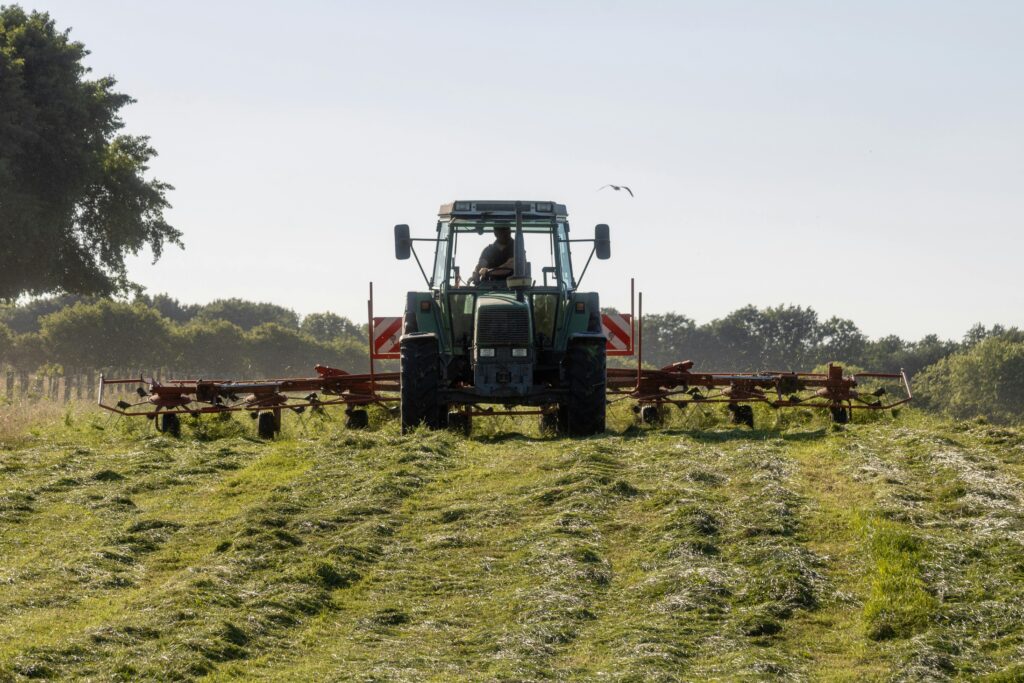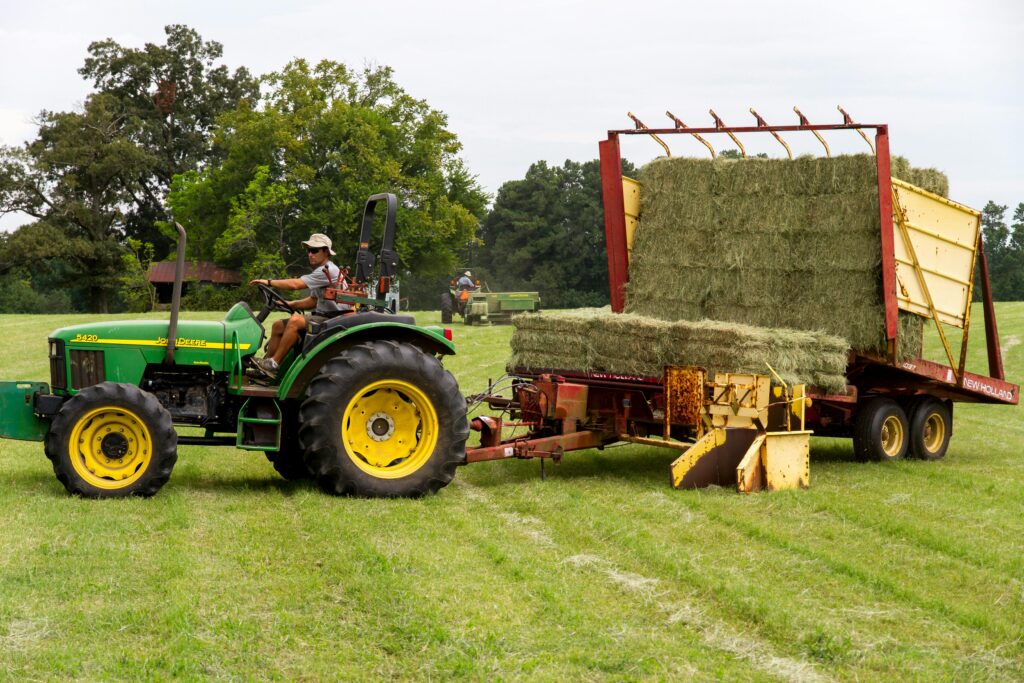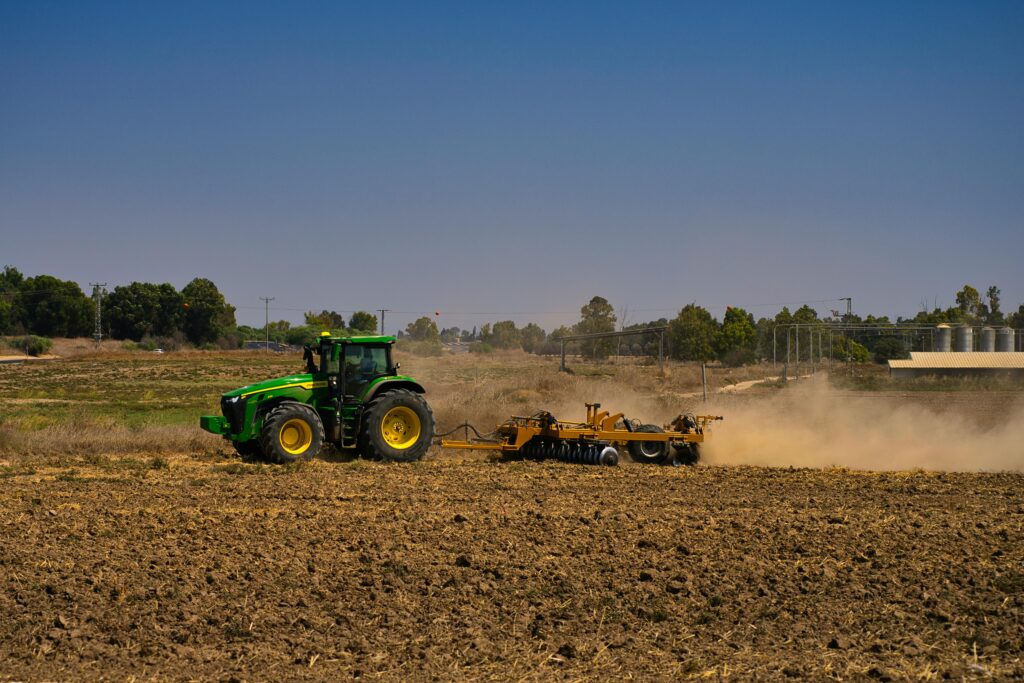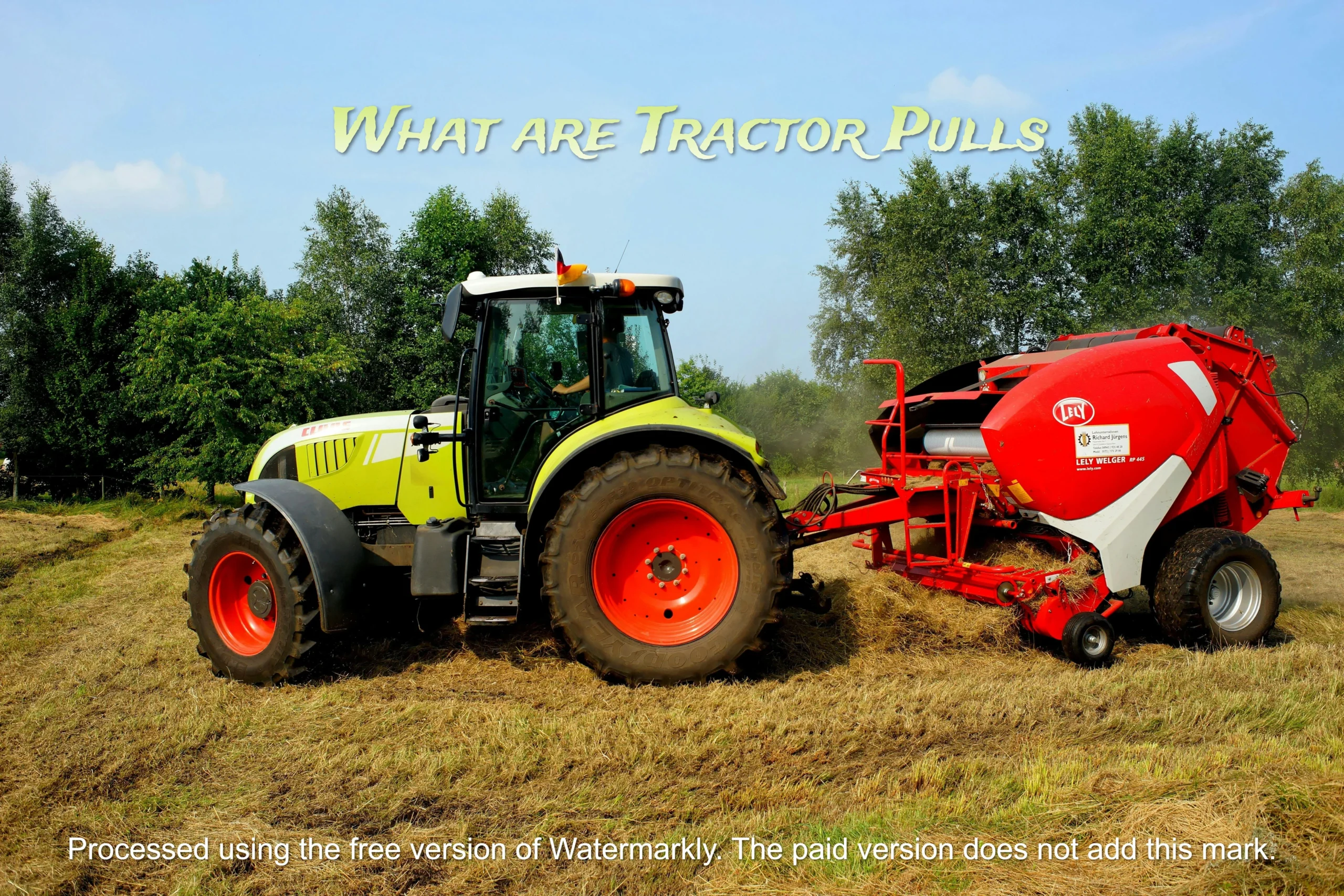A tractor pull is a competitive event where modified tractors or trucks pull a heavy sled along a designated track. The goal is to see who can pull the sled the farthest. The sled contains a weight that shifts forward as the vehicle moves, making it increasingly difficult to pull. Tractor pulls are popular in rural communities and often draw large crowds of spectators.
Introduction
Tractor pulling, also known as truck pulling, is an exhilarating motorsport that originated in the United States and has since gained a dedicated following worldwide. This adrenaline-fueled competition pits massively modified tractors and trucks against an immense weight transfer machine, testing the limits of their engine power, traction, and sheer brute force.
At its core, tractor pulling is a simple yet captivating concept: these behemoth machines are tasked with hauling a heavily weighted sled along a dirt track, with the goal of traveling the farthest distance possible before the sled’s weight overwhelms the tractor’s power and traction. It’s a battle of raw horsepower, torque, and engineering prowess, where the roar of finely tuned engines echoes across the arena, and the smell of burnt rubber and diesel fills the air.
This unique sport has evolved from its humble beginnings in the early 20th century, when farmers would gather to see whose tractor could pull the heaviest load. Today, tractor pulling has transformed into a highly competitive and technologically advanced spectacle, attracting enthusiasts, engineers, and daredevils alike.
Whether you’re a seasoned fan or a newcomer to this thunderous world, this article aims to provide a comprehensive exploration of tractor pulling, delving into its history, rules, classes, and the incredible feats of engineering that make this sport a true testament to human ingenuity and the relentless pursuit of power.
The Origins and Evolution of Tractor Pulling
From Farm Fields to Dedicated Tracks
The roots of tractor pulling can be traced back to the early 20th century, when farmers would gather in their local communities to showcase the prowess of their tractors and engage in friendly competitions. These informal events, often held in fields or at county fairs, were more than just a test of strength; they served as a means for farmers to bond over their shared passion for machinery and agriculture.
As the popularity of these competitions grew, so did the need for standardized rules and dedicated venues. In the 1950s, tractor pulling transitioned from farm fields to specially constructed dirt tracks, allowing for more controlled and fair competitions. This shift also paved the way for the emergence of professional tractor pulling organizations, such as the National Tractor Pullers Association (NTPA) and the United States Hot Rod Association (USHRA), which helped to establish uniform rules, safety regulations, and competitive classes.
The Rise of Specialized Machines
While early tractor pulling events featured stock farm tractors, the sport quickly evolved as enthusiasts sought to push the boundaries of performance. Modifications became commonplace, with competitors tweaking engines, reinforcing chassis, and optimizing weight distribution to gain an edge over their rivals.
As the demand for more powerful and specialized machines grew, dedicated tractor pulling vehicles emerged, featuring purpose-built frames, custom-tuned engines, and advanced traction systems. These machines, often referred to as “super stock” or “unlimited” tractors, were designed from the ground up for the sole purpose of pulling massive weights, leaving their agricultural roots far behind.
Today, tractor pulling machines are marvels of engineering, boasting engine configurations that range from turbocharged diesel engines to alcohol-fueled V8s, capable of generating mind-boggling amounts of torque and horsepower. The evolution of these machines has not only pushed the boundaries of what’s possible but has also driven advancements in automotive technology, with innovations in areas such as fuel injection, turbocharging, and chassis design.

The Rules and Classes of Tractor Pulling
Understanding the Weight Transfer Sled
At the heart of every tractor pulling competition lies the weight transfer sled, a deceptively simple yet ingenious piece of machinery that serves as the ultimate test of a tractor’s power and traction. This sled, which can weigh up to 65,000 pounds (29,484 kg), is connected to the tractor via a sturdy hitch and chain.
As the tractor begins its pull, the sled’s weight is initially concentrated over its front axles, making it easier for the tractor to move. However, as the sled progresses down the track, a clever system of weight boxes and levers gradually transfers the weight towards the rear of the sled, increasing the load and resistance on the tractor.
The distance a tractor can pull the sled before losing traction or power determines the winner, with competitors aiming to travel the full length of the track, typically 300 feet (91 meters) or more.
Competitive Classes and Divisions
To ensure fair competition and accommodate the diverse range of machines, tractor pulling is divided into several classes and divisions, each with its own set of rules and regulations. These classes are typically based on factors such as engine size, weight, and modifications.
Here are some of the most common classes in tractor pulling:
| Class | Description |
|---|---|
| Light Pro Stock | Tractors with limited modifications and engine displacements up to 466 cubic inches (7.6 liters) |
| Super Stock | Highly modified tractors with engine displacements up to 650 cubic inches (10.6 liters) |
| Pro Stock | Specialized pulling tractors with no engine displacement limits, but with weight and safety restrictions |
| Unlimited | The pinnacle of tractor pulling, featuring purpose-built machines with no restrictions on engine size or modifications |
| Truck Classes | Classes for modified pickup trucks, ranging from street-legal to heavily modified “super stock” trucks |
Additionally, many organizations further divide these classes into weight categories, ensuring that competitors are matched against machines of similar size and power.
Safety and Regulations
Given the immense power and potential risks involved in tractor pulling, safety is of paramount importance. Strict regulations govern every aspect of the sport, from machine design and construction to track conditions and safety equipment.
Competitors must adhere to stringent rules regarding roll cages, engine shielding, and fire suppression systems, while also ensuring that their machines meet strict weight and dimension requirements. Tracks are meticulously groomed and maintained, with specialized equipment used to prepare the surface for optimal traction and safety.
Additionally, all participants, including drivers, crew members, and spectators, are required to follow strict safety protocols, such as wearing appropriate protective gear and maintaining designated safety zones around the track.
The Engineering Marvel of Tractor Pulling Machines
Powerhouse Engines and Modifications
At the heart of every tractor pulling machine lies a finely tuned and meticulously crafted engine, capable of generating staggering amounts of power and torque. These engines are true works of art, carefully balanced and optimized to extract every ounce of performance from their intricate assemblies.
One of the most common engine configurations in tractor pulling is the turbocharged diesel engine, renowned for its immense torque and fuel efficiency. These engines, often sourced from heavy-duty trucks or industrial applications, are extensively modified and tuned, with components such as high-performance turbochargers, fuel injection systems, and custom camshafts contributing to their impressive power output.
Alternatively, some tractor pulling machines rely on alcohol-fueled V8 engines, harnessing the explosive power of highly combustible fuels to deliver intense bursts of horsepower. These engines are meticulously built from the ground up, with custom-forged components designed to withstand the extreme stresses of competition.
Regardless of the engine type, tractor pulling machines are masterpieces of engineering, with every component carefully selected and optimized for maximum performance and reliability.
Chassis and Drivetrain Innovations
While engines are the beating heart of tractor pulling machines, their chassis and drivetrains are equally critical components, designed to harness and transfer the immense power to the ground with maximum efficiency.
One of the most significant innovations in tractor pulling chassis design is the use of lightweight yet incredibly strong materials, such as chromoly steel and advanced composites. These materials allow for the construction of rigid frames that can withstand the tremendous forces exerted during a pull while minimizing overall weight, which is crucial for maintaining traction and acceleration.
Traction is further enhanced through the use of specialized tires and suspension systems. Purpose-built tires, often featuring intricate tread patterns and advanced rubber compounds, are designed to maximize grip on the dirt track, while sophisticated suspension setups ensure optimal weight distribution and traction control.
The drivetrain is another critical aspect of tractor pulling machines, with components such as high-torque transmissions, heavy-duty driveshafts, and specialized differentials engineered to handle the extreme power and torque demands of the sport.
Aerodynamics and Weight Distribution
While tractor pulling may not seem like a sport where aerodynamics play a significant role, the reality is quite the opposite. At the highest levels of competition, even the slightest advantage can make a difference, and aerodynamic optimization has become a crucial aspect of machine design.
Engineers and designers strive to create sleek and streamlined body panels, minimizing aerodynamic drag and enhancing stability at high speeds. Additionally, weight distribution is carefully calculated, with ballast and other components strategically positioned to optimize traction and handling characteristics.
Cutting-Edge Technology and Innovation
Tractor pulling is not just a showcase of brute force; it’s also a dynamic arena for the application of cutting-edge technology and innovation. From advanced engine management systems and data logging to the integration of computational fluid dynamics (CFD) simulations, the sport is continuously pushing the boundaries of what’s possible.
One of the most exciting developments in recent years has been the integration of alternative fuel sources, such as biodiesel and ethanol blends, into tractor pulling machines. These efforts not only demonstrate the versatility of these engines but also highlight the sport’s commitment to exploring sustainable and environmentally conscious solutions.
Additionally, the advent of advanced materials science has opened up new possibilities in chassis design, with the use of lightweight yet incredibly strong materials like carbon fiber and advanced composites becoming increasingly common.

The Spectacle and Culture of Tractor Pulling
The Roar of the Engines and the Thrill of Competition
Attending a tractor pulling event is an experience like no other, a sensory overload that captivates and thrills spectators from the moment they step into the arena. The roar of finely tuned engines echoes across the grounds, accompanied by the acrid smell of burnt rubber and the roar of cheering crowds.
As the machines line up at the starting line, the anticipation builds, and the atmosphere crackles with excitement. With a thunderous rumble, the tractors surge forward, straining against the immense weight of the sled as their tires dig into the dirt, kicking up clouds of dust and debris.
The tension mounts as the tractors inch forward, their drivers expertly modulating the throttle and gear changes to maintain traction and momentum. Spectators hold their breath, transfixed by the display of raw power and engineering prowess unfolding before their eyes.
When a tractor finally succumbs to the sled’s resistance, the roar of the crowd reaches a crescendo, celebrating the sheer determination and skill of the competitors. This cycle of anticipation, exhilaration, and celebration repeats throughout the event, creating an electrifying atmosphere that keeps spectators on the edge of their seats.
The Dedicated Community and Lifestyle
Tractor pulling is more than just a sport; it’s a way of life for countless enthusiasts who form a tight-knit and dedicated community. From the seasoned competitors and their crews to the diehard fans and families, this community is united by a shared passion for power, engineering, and the thrill of competition.
At the heart of this community are the drivers and their teams, who pour countless hours and immense dedication into preparing their machines for each pull. These individuals are not just skilled operators but also master mechanics, engineers, and strategists, constantly fine-tuning and optimizing their tractors for peak performance.
Beyond the competition itself, tractor pulling events serve as gathering places for this community, where friendships are forged, experiences are shared, and a love for the sport is passed down from generation to generation. Families often make tractor pulling a cherished tradition, with children growing up surrounded by the sights, sounds, and excitement of these events.
The Impact and Legacy of Tractor Pulling
While tractor pulling may seem like a niche sport to some, its impact and legacy extend far beyond the confines of the arena. The pursuit of power and performance has driven countless innovations in automotive engineering, from advancements in engine technology to breakthroughs in materials science and aerodynamics.
Moreover, the sport has played a significant role in fostering a culture of innovation, inspiring generations of engineers, mechanics, and problem-solvers to push the boundaries of what’s possible. The ingenuity and determination displayed by tractor pulling competitors have served as a source of inspiration for countless individuals, encouraging them to embrace challenges and strive for excellence in their respective fields.
Beyond its technical and cultural impact, tractor pulling has also played a vital role in bringing communities together. These events serve as a celebration of rural heritage and a testament to the enduring spirit of hard work and perseverance that has long been associated with the agricultural heartlands of America and beyond.
As the sport continues to evolve and attract new generations of fans and competitors, its legacy is sure to endure, inspiring future generations to embrace the thrill of competition, the pursuit of engineering excellence, and the shared camaraderie that makes tractor pulling a truly unique and unforgettable experience.

Conclusion
Tractor pulling is a sport that defies convention, a thunderous spectacle where raw power and engineering prowess converge in a display of breathtaking determination and skill. From its humble beginnings in rural America to its current status as a global phenomenon, this sport has captivated audiences with its electrifying competitions and the sheer audacity of its machines.
At its core, tractor pulling is a celebration of human ingenuity and the relentless pursuit of pushing boundaries. It is a testament to the indomitable spirit of those who dare to dream, to innovate, and to conquer seemingly insurmountable challenges through sheer force of will and technological mastery.
Whether you’re a seasoned enthusiast or a newcomer to this exhilarating world, tractor pulling offers an unparalleled experience that will leave you in awe of the incredible feats of engineering and the unwavering determination of those who compete. So, brace yourself for the thunderous roar of engines, the smell of burnt rubber, and the electrifying atmosphere that defines this truly unique and unforgettable sport.
FAQs
- What is the difference between tractor pulling and truck pulling? While both involve pulling a weighted sled, tractor pulling specifically refers to competitions featuring modified agricultural tractors, while truck pulling involves modified pickup trucks or semi-trucks. The rules, classes, and weight categories may vary between the two, but the fundamental concept remains the same.
- How much horsepower do tractor pulling machines typically have? The horsepower of tractor pulling machines can vary greatly depending on the class and category, but some of the top-tier “unlimited” tractors can generate well over 5,000 horsepower from their highly modified engines.
- What types of engines are used in tractor pulling? The two most common engine types used in tractor pulling are turbocharged diesel engines and alcohol-fueled V8 engines. Diesel engines are renowned for their immense torque and fuel efficiency, while alcohol-fueled V8s are known for producing intense bursts of horsepower.
- How far do tractors typically pull the sled in a competition? The distance a tractor can pull the sled varies based on the class, weight, and power of the machine, as well as the track conditions. In top-tier competitions, the best tractors may be able to pull the sled for over 300 feet (91 meters) before losing traction or power.
- What safety measures are in place for tractor pulling events? Safety is of utmost importance in tractor pulling, with strict regulations governing machine design, track conditions, and safety equipment. Competitors must adhere to rules regarding roll cages, engine shielding, fire suppression systems, and weight/dimension requirements. Additionally, spectators and crew members must follow designated safety protocols and maintain safe distances from the track.
